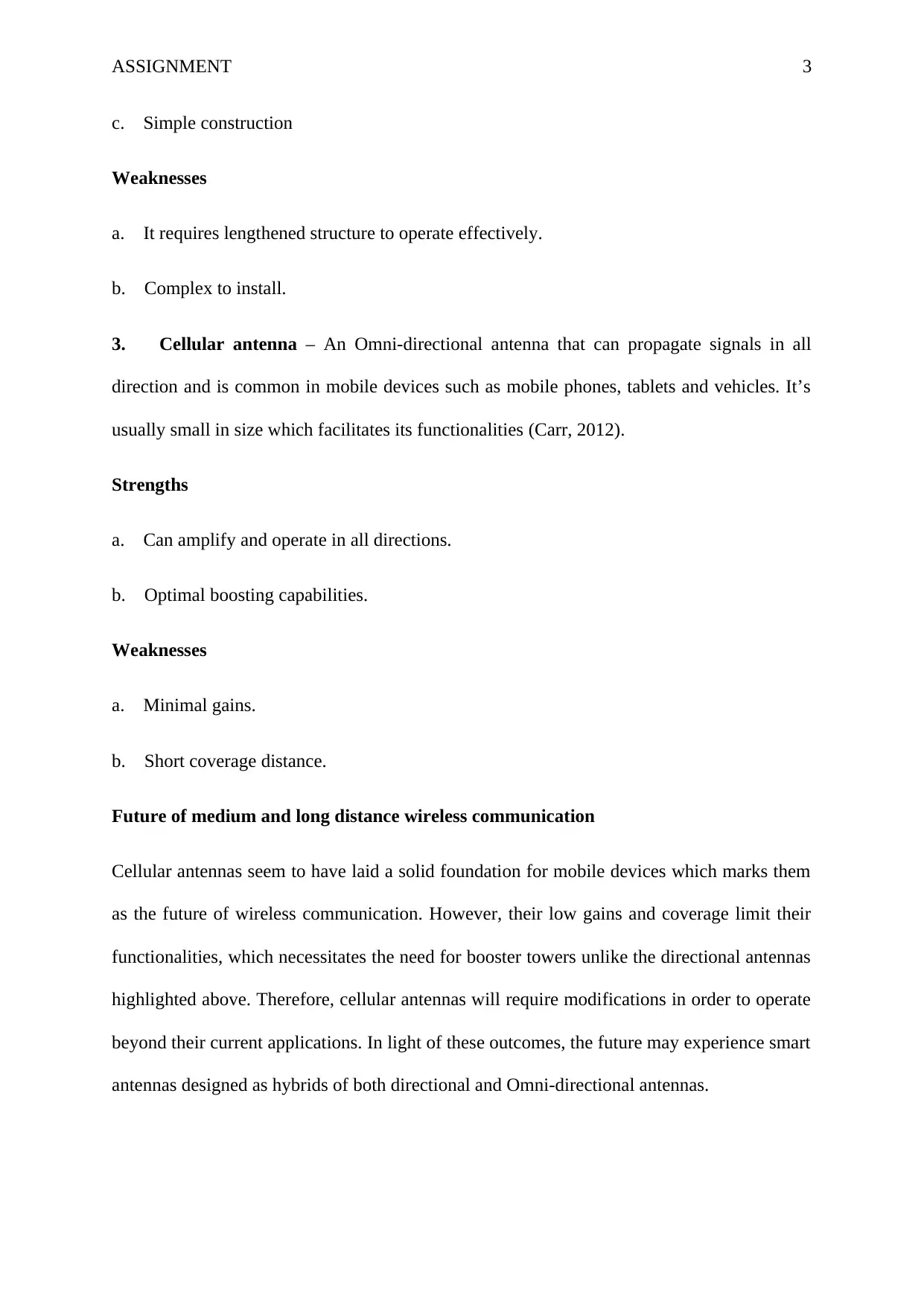Analysis of Antennas and Multiplexing Techniques in Wireless Networks
VerifiedAdded on 2020/03/13
|5
|891
|58
Homework Assignment
AI Summary
This assignment delves into the realm of wireless communication, offering a comprehensive analysis of different antenna types and multiplexing techniques. The solution begins by categorizing antennas based on their wave propagation characteristics, focusing on directional, semi-directional, and omni-directional antennas. It then examines the Yagi, horn, and cellular antennas, highlighting their strengths, weaknesses, and specific applications. The assignment further explores the future of wireless communication, emphasizing the potential of smart antennas. The second part of the assignment compares and contrasts two multiplexing techniques, CDMA and FDMA, detailing their operational principles and suitability for wireless networking. The solution provides a detailed comparison of these techniques, emphasizing their differences. Finally, the assignment presents an analysis of advanced wireless technologies, including their applications, strengths, and weaknesses.
1 out of 5












![[object Object]](/_next/static/media/star-bottom.7253800d.svg)